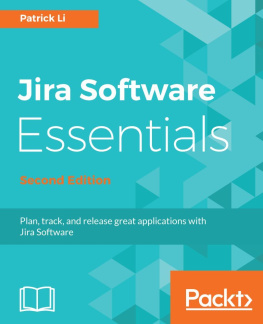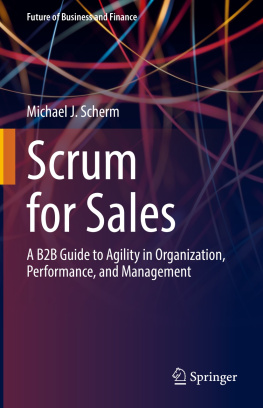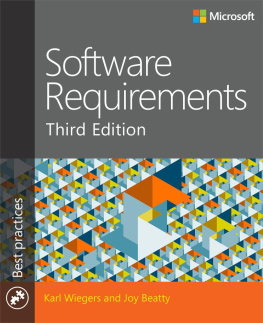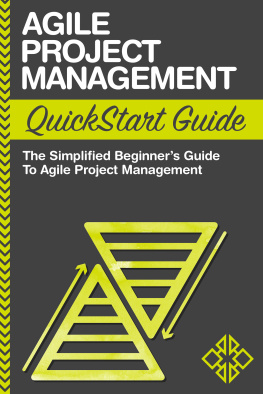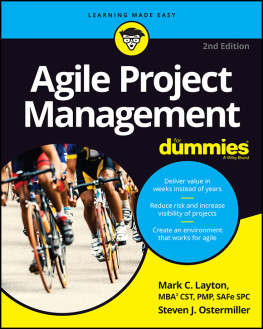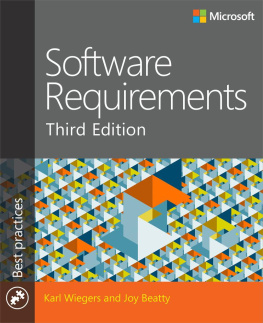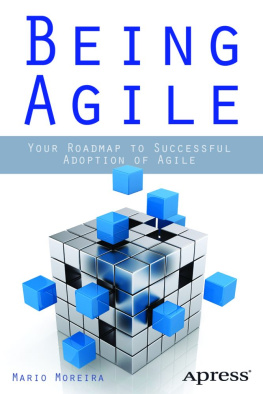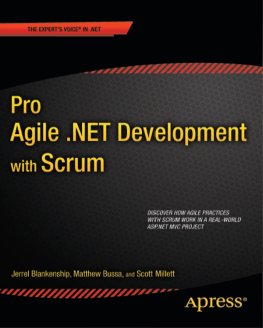About This eBook
ePUB is an open, industry-standard format for eBooks. However, support of ePUB and its many features varies across reading devices and applications. Use your device or app settings to customize the presentation to your liking. Settings that you can customize often include font, font size, single or double column, landscape or portrait mode, and figures that you can click or tap to enlarge. For additional information about the settings and features on your reading device or app, visit the device manufacturers Web site.
Many titles include programming code or configuration examples. To optimize the presentation of these elements, view the eBook in single-column, landscape mode and adjust the font size to the smallest setting. In addition to presenting code and configurations in the reflowable text format, we have included images of the code that mimic the presentation found in the print book; therefore, where the reflowable format may compromise the presentation of the code listing, you will see a Click here to view code image link. Click the link to view the print-fidelity code image. To return to the previous page viewed, click the Back button on your device or app.
Executable Specifications with Scrum
A Practical Guide to Agile Requirements Discovery
Mario Cardinal

Upper Saddle River, NJ Boston Indianapolis San Francisco
New York Toronto Montreal London Munich Paris Madrid
Capetown Sydney Tokyo Singapore Mexico City
Many of the designations used by manufacturers and sellers to distinguish their products are claimed as trademarks. Where those designations appear in this book, and the publisher was aware of a trademark claim, the designations have been printed with initial capital letters or in all capitals.
The author and publisher have taken care in the preparation of this book, but make no expressed or implied warranty of any kind and assume no responsibility for errors or omissions. No liability is assumed for incidental or consequential damages in connection with or arising out of the use of the information or programs contained herein.
The publisher offers excellent discounts on this book when ordered in quantity for bulk purchases or special sales, which may include electronic versions and/or custom covers and content particular to your business, training goals, marketing focus, and branding interests. For more information, please contact:
U.S. Corporate and Government Sales
(800) 382-3419
For sales outside the United States please contact:
International Sales
Visit us on the Web: informit.com/aw
Library of Congress Control Number: 2013939927
Copyright 2014 Pearson Education, Inc.
All rights reserved. Printed in the United States of America. This publication is protected by copyright, and permission must be obtained from the publisher prior to any prohibited reproduction, storage in a retrieval system, or transmission in any form or by any means, electronic, mechanical, photocopying, recording, or likewise. To obtain permission to use material from this work, please submit a written request to Pearson Education, Inc., Permissions Department, One Lake Street, Upper Saddle River, New Jersey 07458, or you may fax your request to (201) 236-3290.
ISBN-13: 978-0-32-178413-1
ISBN-10: 0-32-178413-8
Text printed in the United States on recycled paper at Courier in Westford, Massachusetts.
First printing, July 2013
Editor-in-Chief
Mark Taub
Executive Editor
Chris Guzikowski
Senior Development Editor
Chris Zahn
Marketing Manager
Stephane Nakib
Managing Editor
Kristy Hart
Senior Project Editor
Lori Lyons
Copy Editor
Apostrophe Editing Services
Senior Indexer
Cheryl Lenser
Proofreader
Paula Lowell
Editorial Assistant
Olivia Basegio
Cover Designer
Chuti Prasertsith
Senior Compositor
Gloria Schurick
Praise for Executable Specifications with Scrum
This is a great book that demonstrates the value of putting effort behind requirements in an Agile environment, including both the business and technical value. The book is well-written and flows nicely, approachable for both the manager and the developer. I am recommending this book to all Scrum teams who need to integrate business analysts and architects as active teammates.
Stephen Forte, Chief Strategy Officer at Telerik and Board Member at the Scrum Alliance
Cardinals book brings to light one of the most important and neglected aspects of Scrum: Having user stories that are ready to sprint. Teams often complain about this, and the author offers practical advice on how to get it done right!
Steffan Surdek, co-author of A Practical Guide to Distributed Scrum
Executable Specifications with Scrum doesnt shine through its depth but its breadth. This compendium of proven agile practices describes an overarching process spike touching important aspects of product development in a cohesive way. In this compact book, Mario Cardinal clearly explains how he achieves a validated value stream by applying agile practices around executable specifications.
Ralph Jocham, Founder of agile consulting company effective agile. and Europes first Professional Scrum Master Trainer for Scrum.org
Cardinal provides deep insights into techniques and practices that drive effective agile teams. As a practitioner of the craft Cardinal describes, I now have a written guide to share with those who ask, What is this [ATDD/BDD/TDD/Executable Specification/etc] thing all about? Regardless of the name de jour, Cardinal gives us what works.
David Starr, Senior Program Manager, Microsoft Visual Studio
Scrum is barely a process, only a framework. It is a tool, and you have to provide many complementary practices to reach true business agility. This book is perfect for teams that are using Scrum and want to learn about or get started with executable specifications.
Vincent Tenc and Franois Beauregard, Scrum Trainers at Pyxis Technologies
This book maps out the important place of specifications in an agile landscape to the benefit of agilists of all roles.
Erik LeBel, Technology and Development Consultant at Pyxis Technologies
To my four outstanding children:
Dominic, Lea-Marie, Romane, and Michael.
Figure List
Preface
There is a wide range of books that have been written about specifications. Unfortunately, most of them are not useful for software development teams. These books rely on traditional engineering practices. They assume requirements are known upfront and, once specified, will not change for the duration of the project. And if changes happen, they presume they will be minor, so they could be tracked with a change management process. They promote a sequential process starting with a distinct requirements phase that delivers a detailed requirements specification before starting to design and build the product.
Goal of This Book
It is my belief that traditional engineering practices are not suitable for software development. Central to the process of software specification is a high level of uncertainty, which is not the case with traditional engineering. Fortunately, with the growth of the agile community in the past decade, a body of knowledge more suited to the reality of software development has emerged. Many books explaining agility have become must-read books for anyone interested in software development. A large majority of them contain at least a chapter or two on requirements, some almost totally dedicated to this topic. Because I believe these texts are important, I will include citations from them and reference them throughout this book.



